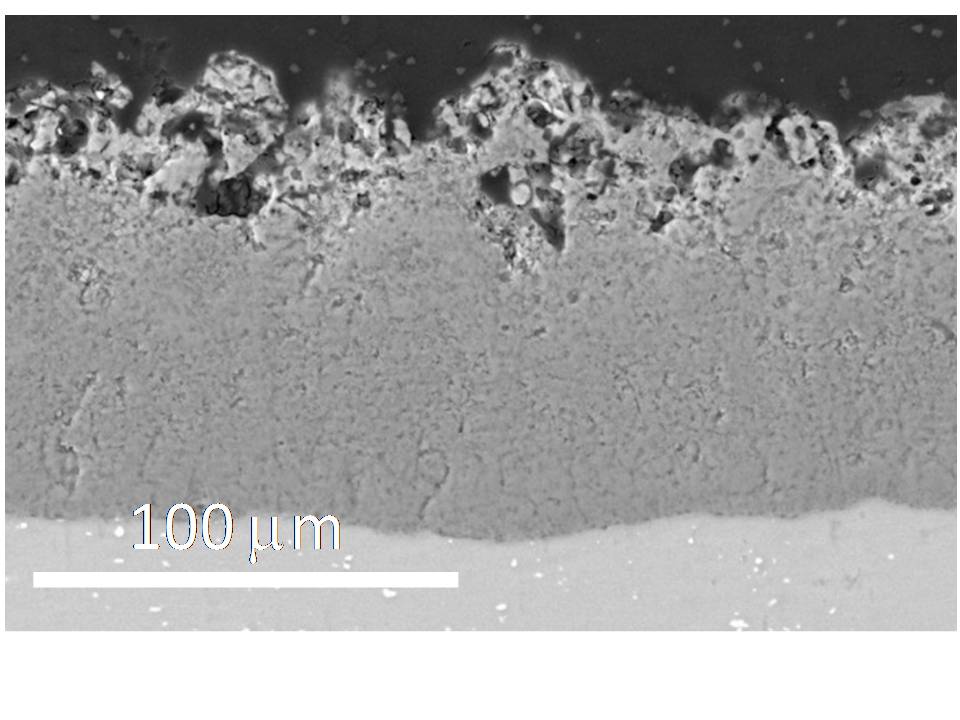Anodizing and Plasma Electrolytic Oxidation

Plasma electrolytic oxidation (PEO) or Microarc Oxidation (MAO) has been receiving an increased attention during the last 15 years. Despite its similarities with conventional anodizing, it differs considerably from the latter in the applied electrical signals and electrolytes. PEO typically occurs at voltages exceeding the dielectric breakdown voltage of the oxide film and the accompanying gas (100-600 V) and uses dilute, environmentally friendly alkaline electrolytes. The fundamental characteristic of PEO are numerous short-lived (from a few to several tens of ms ) plasma microdischarges that are produced by ionization of the gas and take place in the breakdown channels inside the coating. The high temperatures and pressures of the plasma facilitate a rapid growth of the coating (1-4 micrometer/min) which comprises the substrate- and electrolyte-derived constituents that form crystalline and amorphous phases. Unlike conventional anodizing, PEO does not need any special surface preparation and produces coatings of exceptional hardness (1000-2000 HV on aluminium alloys and above 400 HV on Mg and Ti alloys) and wear resistance. The porous outer part of the PEO coatings serves as an excellent base for primers and paints which allows for achievement of an excellent corrosion resistance and a range of distinctive surface finishes for industrial needs.
Currently the CCRM group of the UCM is the only one in Spain that has been involved for over a decade in systematic fundamental and practical studies of PEO processes on a variety of light alloys. The PEO research of the group focuses on three principal lines: improvement of corrosion resistance of Mg alloys, increase of the PEO process energy efficiency for Al alloys using an original preliminary precursor approach and development of bioactive coatings for Ti and Mg alloys.
